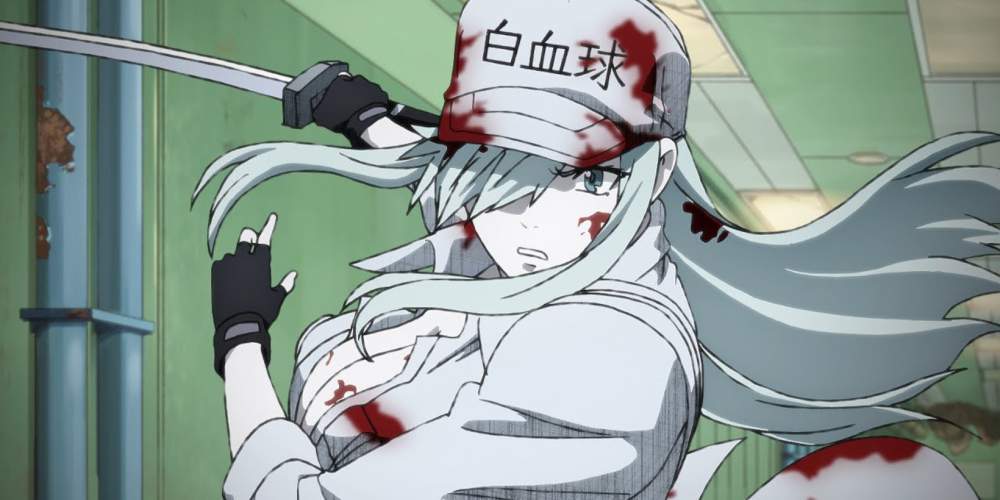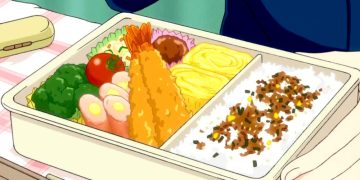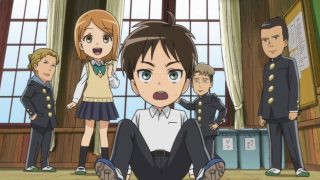Anime and manga creators like to pull inspiration from anywhere, and it results in all kinds of interesting elements in their work—like real-life scientific facts and concepts that impact the plot and make scenes not only dramatic but also informative.
Of course, anime and manga series also like to push the boundaries of those facts and concepts in ways that aren't fully true in real-life. Examples include Ishigami Senku building a world of technology from scratch in Dr. Stone and the White Blood Cell army in Cells at Work.
Here are the coolest anime series that incorporate real-life scientific facts and concepts to elevate their stories to the next level.
8. Everyday Pathogens (Moyashimon)
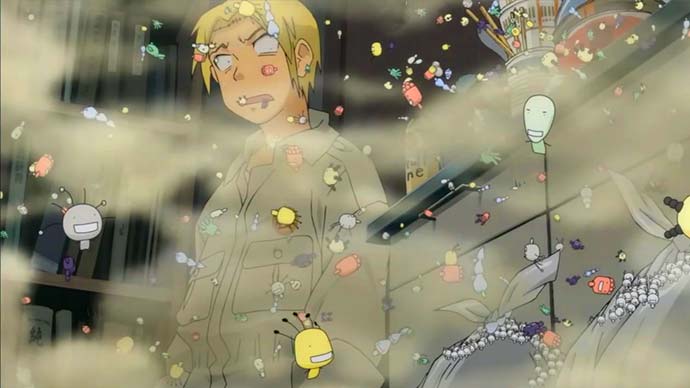
Moyashimon (or Moyasimon: Tales of Agriculture) is an anime series with fictional content blended into the world of science. It's an anime series adapted from the manga of the same name by Masayuki Ishikawa.
It follows the story of Tadayasu Sawaki, an agriculture student who can see and communicate with pathogens and other microorganisms without needing a microscope.
Aside from his ability, the series also features microscopic characters of their own types, like E. Coli, M. Mucedo, and others. This anime will shed light on what's in the air we breathe and in the food we eat.
7. Sulfuric Acid (Dr. Stone)
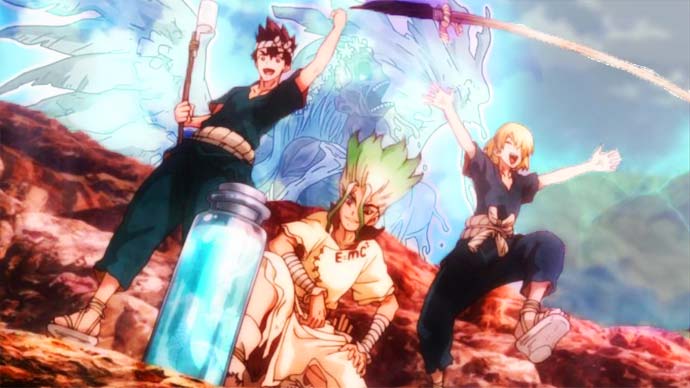
Dr. Stone is an anime series based on Riichiro Nagaki's manga of the same name. It features a post-apocalyptic world 3,700 years after humanity was turned to stone, with no technology remaining.
As an ingredient in their sulfa drugs, Senku's team needs to gather a dangerous and poisonous compound: sulfuric acid. It's characterized as a beautiful goddess in a lake who's trying to lure people to its astonishing yet deadly waters.
The anime showed the acid's effect on living creatures that make direct contact with the compound and people who breathe too much of the gas, which can result in instant death.
Dr. Stone also explains the corrosive effect of acid on metals using a silver spear as a guide. If it turns black, it's time for them to run!
6. Zodiac Signs (Fairy Tail)
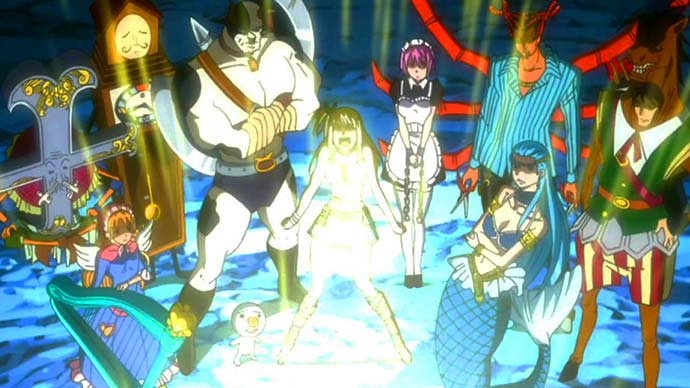
Lucy Heartfilia, a Celestial Spirit key holder, owns the most Celestial Spirits that she can summon to aid her in fights. The Celestial Spirits, however, are based on the widely known Zodiac Signs.
In the second season of Fairy Tail, the twelve Celestial Spirits from the Celestial Spirit World are introduced—their characters, personalities, and even their constellations. The serpent-bearer Ophiuchus is also introduced as the 13th Zodiac Sign.
In the pseudoscience of astrology, heavenly bodies (like the Zodiac Signs) play a significant role in every person's luck, personality, and even destiny. In the science of astronomy, they're simply constellations that have designated equal spaces in the celestial sphere.
5. Jump Float Serve (Haikyu!!)
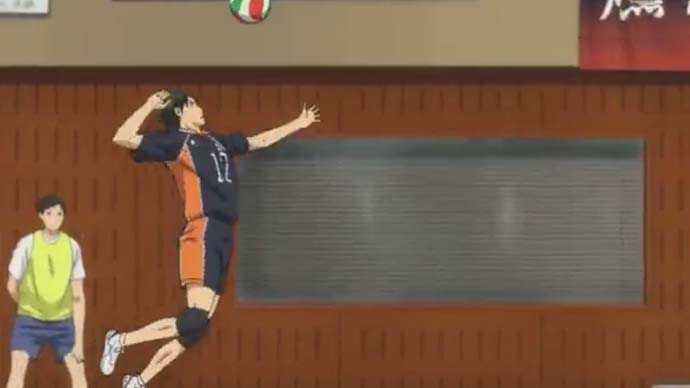
Haikyu!! is a volleyball sport anime that shows exaggerated player movements, but they're based on the real thing.
For example, in episode 22 of the second season, the pinch server Tadashi Yamaguchi served five times in a row using his special attack: the jump float serve.
It's described in the anime like so: the receiver sees it coming and they're ready to receive in a perfect manner, but the ball changes course at the last second, just a few inches before it lands.
The physics of this unpredictable serve involves the spin of the ball (which must be minimal or no spin at all), speed, direction, and the amount of force the server imparts to the ball.
4. Sleep Apnea Syndrome (Comical Psychosomatic Medicine)
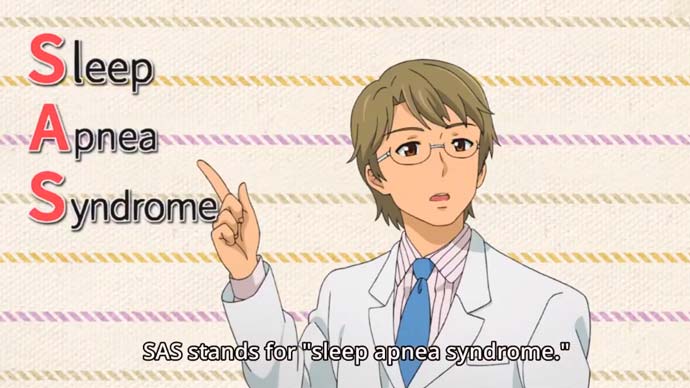
Comical Psychosomatic Medicine is an anime about a psychiatrist and a nurse who give brief explanations of different mental conditions. Episode 13 features sleep apnea syndrome and discusses why and how it occurs.
It's common in obese people, as the extra tissue in the throat contributes to obstructing the air passage. This prevents them from breathing properly when they sleep, resulting in poor sleep quality. The anime also discusses how to treat SAS and its symptoms.
Beyond SAS, Comical Psychosomatic Medicine also features other health and mental disorders, but always in a comical way (and sometimes with a touch of ecchi thrown in).
3. Pneumococcus Bacteria (Cells at Work!)
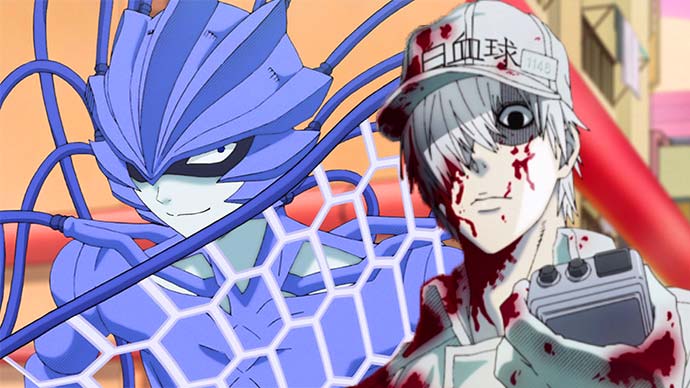
Cells at Work! is an anime series based on Akane Shimizu's manga of the same name. It follows the story of human body cells, which are personified as people assigned with their own duties.
The main character, who is an erythrocyte (red blood cell), shows how the blood circulates throughout the body and what each blood component encounters during circulation. Somehow, she always loses her way.
The first episode starts off with an intense battle between the all-white men who portray neutrophils (white blood cells) and the monsters who portray pneumococcus (bacteria that cause pneumonia).
The series explains how bacteria can multiply and invade the entire body within a short period of time, and if not for the main function of white blood cells, the bacteria could cause serious damage to the body.
The series also features other bodily processes, such as platelets which are portrayed as cute little kids marching to patch scars.
2. Phagocytosis (Cells at Work! Code Black)
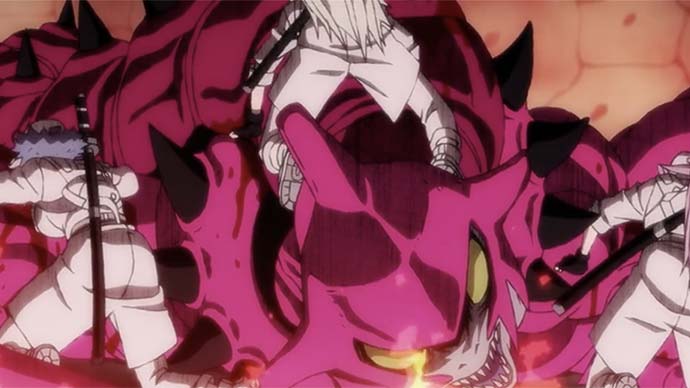
Cells at Work! Code Black is a spin-off anime series based on the manga written by Shigemitsu Harada and illustrated by Issei Hatsuyoshi.
This one features phagocytosis, which is one of the two types of processes in which a cell ingests solid objects (such as bacteria or other blood cells) to consumes them as food.
In the second episode, the white blood cells are characterized as female fighters who mercilessly attack foreign objects. After killing a large target, they eat the remains. (In true phagocytosis, the cell ingests it whole rather than biting it chunk by chunk.)
1. Sodium and Water Fire (Case Closed)
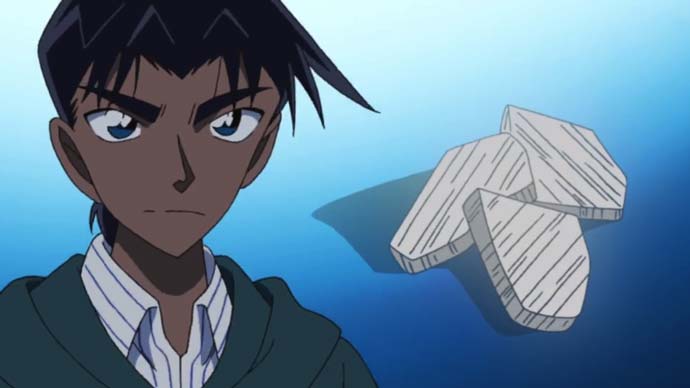
The Case Closed anime series features a mystery involving a legendary monster called Nue. In one particular case, the culprit ignites a fire by making the crime scene look like the work of the Nue.
The culprit uses a chemical reaction that mixes metallic sodium (Na) with liquid water (H2O). This releases hydrogen and heat. When that hydrogen contacts oxygen in the air, the elements ignite and create fire.
This is real science! If you ever get your hands on metallic sodium (hopefully you never stumble upon it unwittingly), never let it touch water—it will catch fire and possibly even explode.
